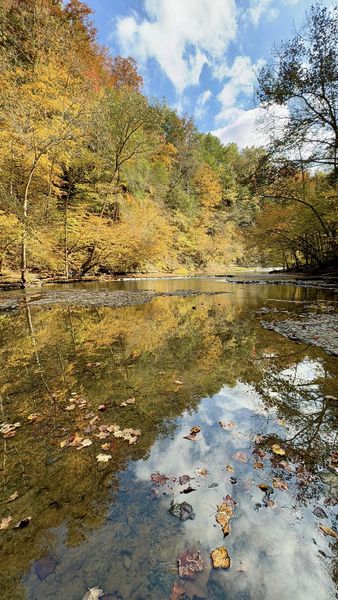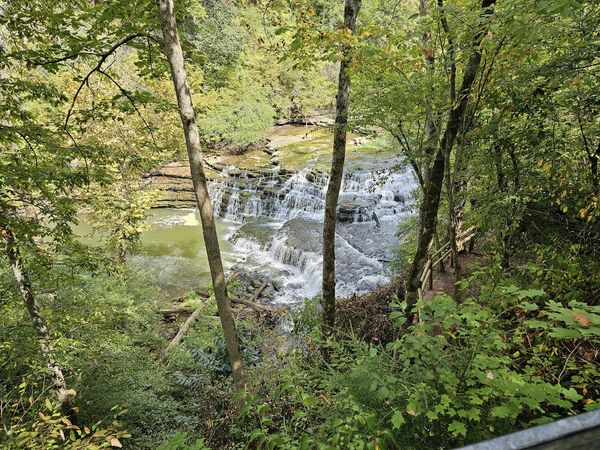Looking for a hiking destination that combines scenic beauty, thrilling trails, and cascading waterfalls? Burgess Falls State Park in Tennessee might just be the perfect spot. Nestled in the lush Tennessee hills, Burgess Falls offers hiking trails that promise adventure, breathtaking views, and an experience you won’t soon forget. This guide will help you navigate everything from choosing the best trail to knowing what to expect along the way, making sure you’re well-prepared for your unforgettable visit.
Getting to Know Burgess Falls State Park
Burgess Falls State Park is located near the small town of Sparta, Tennessee, along the Falling Water River. This park has become a favorite for nature enthusiasts thanks to its towering waterfalls, dramatic river scenes, and vibrant ecosystems. The star attraction, Burgess Falls, is a 136-foot waterfall that plummets over a limestone bluff, creating one of the most awe-inspiring natural sights in the area. Beyond the falls, the park features dense forests, river overlooks, and varied terrain, which makes for some thrilling hiking trails.
What to Expect on the Trails
Burgess Falls State Park has multiple trails suited for different skill levels, so whether you’re a beginner or a seasoned hiker, there’s something for everyone. The park’s trails vary in length and difficulty, allowing you to choose an adventure that matches your energy and experience level. Expect rocky paths, river views, and forested trails that open up to breathtaking overlooks. Along the way, you’ll encounter a range of landscapes—from shaded woodland areas to open rocky overlooks where you can take in panoramic views of the river below.

Main Trail: The Burgess Falls Trail
The Burgess Falls Trail is the most popular route in the park, taking hikers directly to the park’s namesake waterfall. This trail is a moderate 1.5-mile round trip, which may seem short, but it’s packed with sights and thrilling moments. Along the trail, you’ll encounter three smaller waterfalls, each offering its unique beauty and photo opportunities. As you approach the main falls, the trail becomes a bit steeper and more rugged, so be prepared for some uneven terrain.
The trail follows the river closely, and you’ll enjoy the sound of rushing water as you hike along. As you get closer to Burgess Falls, the scenery becomes more dramatic, with steep cliffs and rocky formations framing the falls in a stunning display of natural beauty. There’s even an overlook near the end of the trail where you can pause to take in the full grandeur of the falls.
Other Notable Trails and Scenic Spots
While the Burgess Falls Trail might be the main attraction, other trails offer their own unique experiences. The River Trail is a shorter path that provides close-up views of the Falling Water River. It’s a great choice for those who want a more leisurely hike but still want to immerse themselves in the park’s scenic views. Another option, the Ridge Top Trail, takes hikers through the wooded areas higher up, offering peaceful surroundings and occasional views of the river valley below.
These additional trails are less crowded, making them ideal for hikers who prefer a quieter experience or enjoy birdwatching and photography. Don’t forget to explore some of the smaller side trails along the way, where you’ll find secluded spots perfect for relaxing or taking in the beauty of the surrounding nature.
Wildlife and Flora Along the Trails
Burgess Falls State Park is home to diverse wildlife and plant species that add to the magic of hiking here. As you wander through the trails, you may spot native birds like warblers and woodpeckers, or if you’re lucky, you might catch a glimpse of a white-tailed deer in the forested areas. The park is also known for its rich flora, with wildflowers blooming in spring and fall, adding splashes of color to the trails.
For those who appreciate the details, the trails offer many opportunities to see Tennessee’s native plants up close, from the towering tulip poplars to the delicate fern species that line the paths. Keep an eye out for the interpretive signs along the trails that provide insights into the local wildlife and plant species.
Best Times to Visit Burgess Falls
Wondering when’s the best time to visit? Burgess Falls is stunning year-round, but each season brings its unique charm. Spring and early summer are ideal if you want to experience vibrant wildflowers and lush greenery, while fall offers a beautiful display of autumn colors. Winter can be a quieter time to visit, with fewer crowds and a peaceful atmosphere, but be prepared for colder temperatures and some trail closures due to icy conditions.
The trails can be busy on weekends and holidays, especially during peak season, so visiting early in the morning or on a weekday can provide a more tranquil experience.
Trail Tips and Safety Precautions
Before heading out on the trails, it’s important to take some precautions to ensure a safe and enjoyable hike. First and foremost, wear sturdy hiking shoes, as the trails can be rocky and uneven, especially near the falls. It’s also a good idea to pack plenty of water, as there are limited facilities along the trails.
Always stay on the designated paths to protect the park’s natural areas and avoid dangerous spots, especially near the cliffs around the falls. Keep an eye on weather conditions, as sudden rains can make trails slippery and challenging. Lastly, respect wildlife by observing from a distance and never feeding animals, which helps maintain the natural ecosystem.
Conclusion
Burgess Falls State Park is a true gem for hikers and nature lovers, offering an unforgettable experience that combines adventure, beauty, and tranquility. From the roar of Burgess Falls to the quiet trails leading you through Tennessee’s natural landscapes, each hike offers its unique story. With this guide in hand, you’ll be well-prepared to explore the best of what the park has to offer, creating memories on the trails that will last a lifetime.
FAQs
1. How difficult are the hiking trails at Burgess Falls?
The trails at Burgess Falls vary in difficulty, with some moderate paths and others that are more challenging. Most visitors find the main Burgess Falls Trail manageable, but parts of the trail can be steep and rocky.
2. Are dogs allowed on the trails?
Yes, dogs are allowed on the trails, but they must be kept on a leash at all times to protect both wildlife and other visitors.
3. Is there a fee to enter Burgess Falls State Park?
No, entrance to Burgess Falls State Park is free, making it an accessible adventure for all!
4. Can I swim near Burgess Falls?
Swimming is not allowed in the river or near Burgess Falls due to safety concerns and strong currents.
5. What facilities are available at the park?
The park offers restrooms, picnic areas, and parking. However, there are limited food options, so it’s a good idea to bring your snacks or a packed lunch.

